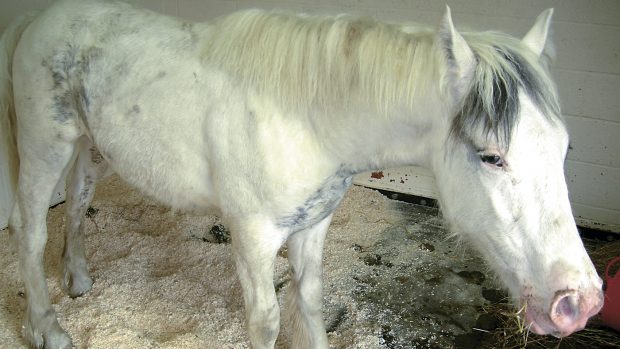Injections are such a routine part of health care that it can be a shock if things go wrong. Problems fall into two main categories: reactions at injection sites and reactions to either the medication injected or the adjuvant, the medium in which it is mixed or dissolved.
Reactions at the site are the most common and can range from slight swelling to severe stiffness and even injection abscesses; they are usually short-lasting, though if an abscess forms it will need to be treated.
Less frequently, a horse may react violently to penicillin, which puts it and anyone near it in a confined space at risk. Occasionally, an animal may become unsteady for a short time after intravenous bute has been administered.
“Although violent reactions are not common in general, penicillin is the most frequent cause,” says Dr Polly Taylor MRCVS, European specialist in veterinary anaesthesia.
“The reaction is usually short-term and the biggest risk is that the horse can damage itself while it’s happening.”
However, penicillin is so effective and reactions so rare that the risks are felt to be acceptable. But it is vital that any vet treating a horse known to have suffered a reaction is told, so alternative medication can be used.
Is it safe to inject?
All medicines and vaccines have to meet stringent safety criteria, and contraindications for use are listed. For instance, some treatments should not be
used if a horse has certain pre-existing conditions, such as kidney problems, and vets also need to check that different medicines are compatible when more than one is used at the same time.
Dr Taylor emphasises that vaccination against the killer disease tetanus is essential, while the vaccination against flu may also be life-saving, as well as being mandatory for competition. She says even animals who do not compete should be protected, as the risks from disease are far greater than those associated with injection.
“A high proportion of the whole horse population needs to be vaccinated to prevent an outbreak,” she says.
Most vets now don’t swab the skin before vaccinating, which some owners worry about. The reason is that swabbing, as opposed to trying to achieve a sterile site, can cause more problems than it prevents.
“To sterilise the skin properly, you need to clip the area and make sure the sterilising solution is in contact with the skin for several minutes,” explains Dr Taylor. “If there’s even slight damage to the skin it can cause problems.
“Swabbing stirs everything up on the surface, so there’s a risk of taking in a solution of dirt on the needle. Even when you don’t swab, it’s possible for a tiny particle of dirt from the coat or skin to get in.”
When an unvaccinated horse arrives in a new home, tetanus protection should be given immediately. However, if it is suspected that the horse could be incubating a virus such as flu, a vet may suggest checking it over and perhaps taking a blood sample to check the white cell count before giving certain treatments or vaccination.
Unfortunately, in most cases, it is impossible to tell if a horse is going to react before it actually does so. The horse may appear perfectly normal beforehand.
“A vaccine won’t work as well if a horse is ill because the immune system won’t be working properly,” says Dr Taylor. “And if it has one disease and you’re giving it a tiny dose of another, even though it’s in a safe form, it can make the horse worse.”
Recent FEI rule changes mean some horses may need more frequent vaccinations. Dr Taylor, a horse owner with a particular interest in eventing, advises allowing a few easy days afterwards.
“Some competition regulations say vaccinations must be given at least seven days prior to an event, but even if this doesn’t affect you, it’s better to try to vaccinate when you’re not going to be hunting or competing during the next few days,” she says.



